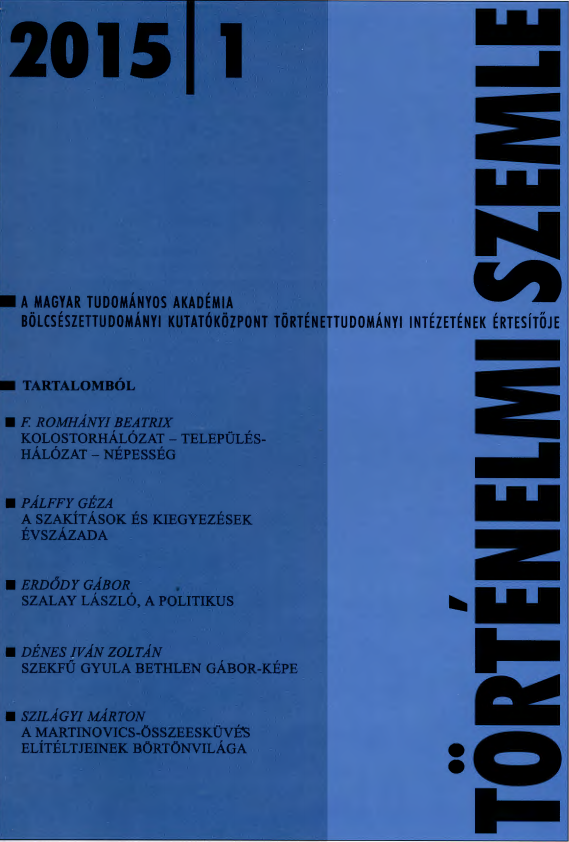A szakítások és kiegyezések évszázada: a Magyar Királyság 17. századi története új megvilágításban
The Century of Ruptures and Compromises: The History of the Kingdom of Hungary in the Seventeenth Century from a New Perspective
Author(s): Géza PálffySubject(s): Geography, Regional studies, Political history, 17th Century, 18th Century
Published by: Magyar Tudományos Akadémia Bölcsészettudományi Kutatóközpont Történettudományi Intézet
Keywords: history; Kingdom of Hungary; 17th century; politics;
Summary/Abstract: The long 17th century, extending from the Peace of Vienna in 1606 to the Treaty of Szatmár in 1711, occupies a special place within the history of the Kingdom of Hungary. Its interpretation has traditionally been determined by the independentist approach of Hungarian romantic national historiography, which was born in the second half of the 19th century. Consequently, as late as the 1950s and 1970s the 17th century was still regarded as the most decisive period of the Hungarian struggles for independence, while in the 1980s and 1990s its most salient feature was identified in the alleged attempts launched from the Principality of Transylvania at the unification of the Hungarian Kingdom. On the basis of several years of archival research, and following in the footsteps of such historians as Robert Evans from Oxford, Thomas Winkelbauer from Vienna and Jean Bérenger from Paris, the author of the present study rather examines the history of the Hungarian Kingdom in the 17th century as part of a relationship between the Central European Habsburg Monarchy and the Kingdom of Hungary, the Habsburg court of Vienna and the Hungarian political elite. Within such a framework, the history of Hungary between 1606 and 1711 can be regarded as the century of ruptures and compromises. For the course of the century was determined by five important compromise-systems (1608: Pozsony/Pressburg, 1622: Sopron/Ödenburg, 1647: Pozsony, 1681: Sopron, 1711: Szatmár), practically all of which were elaborated at the Hungarian diet, and were accompanied by ruler coronations (1608: Hungarian King Matthias II, 1622: Queen Eleonora Gonzaga, 1647: King Ferdinand IV, 1681: Queen Eleonora Magdalena Theresia of Pfalz-Neuburg, 1712: King Charles III). Each of these compromises guaranteed the privileges and liberties of the Hungarian estates, and secured for the Hungarian political elite a decisive role in shaping the domestic politics, local administration and judicial system of Hungary. As a result, among all the constituents of the Habsburg Monarchy in the 17th and 18th centuries Hungary was one of the strongest in terms of sovereignty and estate state formation, and absolutism could not be introduced east of the Leitha river. In the light of recent research the topos which regards the Hungarians as “perennial rebels” should also be nuanced. With regard to the 17th century the term of “perennial compromise-seekers” could be applied to them as well. And, finally, the study draws attention to the fact that the history of the Kingdom of Hungary and that of the Principality of Transylvania in the 17th century, despite the manifold contacts between them, cannot be described within the framework of one and the same model or concept, for whereas the former was an important part of the Central European Habsburg Monarchy, the latter belonged to the sphere of interest of one of the strongest states of the contemporary world, namely the Ottoman Empire.
Journal: Történelmi Szemle
- Issue Year: 2015
- Issue No: 01
- Page Range: 51-65
- Page Count: 15
- Language: Hungarian

